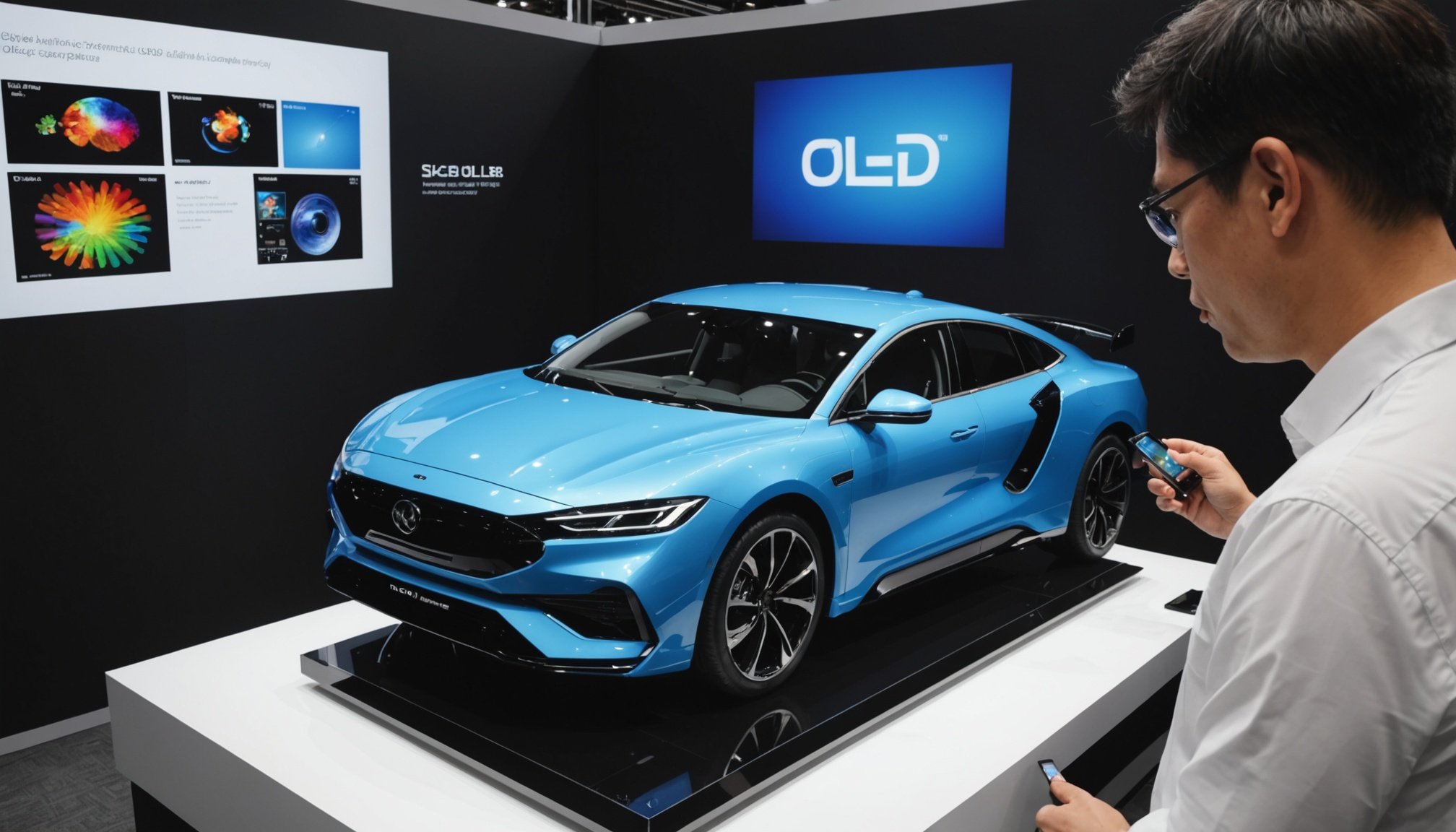Unveiling Cutting-Edge Innovations in OLED Technology: Boosting Visual Display Excellence
In the ever-evolving world of display technology, OLED (Organic Light-Emitting Diode) has emerged as a beacon of innovation, revolutionizing the way we experience visual content. From the sleek designs of modern TVs to the immersive gaming monitors, OLED technology has set a new standard for display excellence. Let’s dive into the latest advancements and what makes OLED displays stand out in the market.
The Evolution of OLED Technology
OLED technology has come a long way since its inception. Initially known for its high energy efficiency and vibrant colors, OLED displays have now become synonymous with top-notch picture quality and advanced gaming features.
In the same genre : Transforming sports coaching: the game-changing impact of augmented reality on real-time performance
“One of the most significant advancements in OLED technology is the integration of HDR (High Dynamic Range) formats like Dolby Vision and Dolby Atmos,” notes a review of the Panasonic LZ980 OLED TV. “These features ensure that any content optimized for HDR is displayed with stunning visuals, vibrant colors, and deep blacks, making the viewing experience almost flawless”[1].
Picture Quality and Performance
When it comes to picture quality, OLED displays are hard to beat. Here are some key aspects that make them exceptional:
Also to discover : Reimagining history: the impact of cutting-edge robotics on restoring uk’s historic landmarks
Contrast Ratios and Black Levels
OLED panels are renowned for their ability to produce true blacks, which is a result of each pixel emitting its own light. This leads to nearly infinite contrast ratios, making the picture look more lifelike and immersive.
“The deep blacks and high contrast levels ensure a nearly flawless picture, free from blooming or washed-out colors,” highlights the review of the Panasonic LZ980 OLED TV. “This is particularly evident in dark areas, where OLED truly shines”[1].
Viewing Angles
Unlike traditional LCD TVs, OLED displays maintain their picture quality even when viewed from the side. This makes them ideal for home entertainment setups where multiple people are watching from different angles.
“The viewing angles are nearly perfect, ensuring consistent picture quality, contrast, and color regardless of where you place it in your room or on your desk,” explains the review of the Panasonic LZ980 OLED TV[1].
Gaming Features: The New Frontier
For gamers, OLED TVs have become the go-to choice due to their advanced features that enhance the gaming experience.
High Refresh Rates and Response Times
OLED TVs like the LG C4 and Panasonic LZ980 support high refresh rates of up to 120Hz and 144Hz, respectively. This, combined with low response times (often as low as 1ms), ensures smooth and tear-free gameplay.
“The 120Hz refresh rate enhances the visual smoothness, ideal for any gaming genre,” says the review of the LG OLED evo C3. “The visuals are simply flawless, making it a game-changer for sim racing setups”[2].
Variable Refresh Rate (VRR) and AMD FreeSync/Nvidia G-Sync
Features like VRR, AMD FreeSync, and Nvidia G-Sync are crucial for maintaining a smooth gaming experience. These technologies adjust the refresh rate in real-time to match the frame rate of the game, eliminating screen tearing and stuttering.
“The LG C4 supports AMD FreeSync Premium and Nvidia G-Sync, making it a great choice for PC gamers,” notes TechRadar. “The TV also features four HDMI 2.1 ports with 4K 120Hz support, along with VRR and auto low latency mode”[5].
Energy Efficiency and Design
OLED technology is not only about picture quality but also about energy efficiency and sleek design.
Energy Efficiency
OLED displays are generally more energy-efficient compared to traditional LCDs because each pixel emits its own light, reducing the need for a backlight.
“OLED displays are energy-efficient, which is a significant advantage over other display technologies,” explains an expert. “This makes them not only environmentally friendly but also cost-effective in the long run.”
Smart Design
Modern OLED TVs and monitors boast sleek and minimalist designs that fit seamlessly into any home or office setup.
“The ultra-thin bezels of the LG OLED evo C3 create an almost seamless image across multiple displays, which is particularly beneficial for immersive experiences like sim racing,” highlights the review of the LG OLED evo C3[2].
Market Leaders and Innovations
Several companies are at the forefront of OLED technology, each bringing their unique innovations to the market.
Panasonic
Panasonic’s LZ980 OLED TV is a prime example of cutting-edge innovation. With features like Gamer Mode Extreme, 120Hz refresh rate, and the Game Control Board, it is tailored for an exceptional gaming experience.
“Panasonic’s dedication to gamers is evident in their efforts beyond just providing HDMI 2.1. They’ve introduced a gaming menu called the Game Control Board, which you can access by pinning it to your app area or assigning it to the my apps button,” notes the review of the Panasonic LZ980 OLED TV[1].
LG
LG is another company pushing the boundaries of OLED technology. Their C4 OLED TV, for instance, is 144Hz-certified by Nvidia for G-Sync and supports AMD FreeSync Premium, making it a favorite among PC gamers.
“LG’s 2024 TVs, including the C4, are the first models to be 144Hz-certified by Nvidia for G-Sync,” says TechRadar. “This, combined with four HDMI 2.1 ports and support for Dolby Vision gaming, makes the C4 an excellent choice for both console and PC gamers”[5].
Comparative Analysis of Top OLED TVs
Here is a comparative table of some of the top OLED TVs in the market, highlighting their key features:
| TV Model | Refresh Rate | HDR Support | Gaming Features | Viewing Angles | Energy Efficiency |
|---|---|---|---|---|---|
| Panasonic LZ980 | Up to 120Hz | Dolby Vision, Dolby Atmos | Gamer Mode Extreme, VRR, HDMI 2.1 | Nearly perfect | High energy efficiency |
| LG C4 | Up to 144Hz | Dolby Vision, HDR10 | AMD FreeSync Premium, Nvidia G-Sync, VRR | Wide viewing angles | Energy-efficient |
| Samsung S90D | Up to 144Hz | HDR10+, No Dolby Vision | VRR, ALLM, QD-OLED panel | Wide viewing angles | High energy efficiency |
| LG B4 | Up to 120Hz | Dolby Vision, HDR10 | AMD FreeSync, Nvidia G-Sync, VRR | Wide viewing angles | Energy-efficient |
Practical Insights and Actionable Advice
If you’re considering upgrading to an OLED TV or monitor, here are some practical insights and tips:
- Check the HDR Support: Ensure the TV supports your preferred HDR format, whether it’s Dolby Vision, HDR10+, or both.
- Gaming Features: If you’re a gamer, look for TVs with VRR, AMD FreeSync, and Nvidia G-Sync to ensure a smooth gaming experience.
- Viewing Angles: Since OLED displays maintain their quality even at wide viewing angles, they are ideal for family gatherings or multi-player gaming sessions.
- Energy Efficiency: Consider the energy efficiency of the TV, as OLED displays are generally more energy-efficient than traditional LCDs.
OLED technology has revolutionized the world of displays, offering unparalleled picture quality, advanced gaming features, and energy efficiency. Whether you’re a gamer, a movie enthusiast, or simply looking to upgrade your home entertainment setup, OLED TVs and monitors are the way to go.
As the market continues to evolve, we can expect even more cutting-edge innovations from companies like Panasonic, LG, and Samsung. For now, these TVs are not just displays; they are gateways to immersive experiences that bring the world to your living room.
“In the end, it’s not just about the technology; it’s about the experience it provides,” says an enthusiast. “OLED displays have set a new benchmark for visual excellence, and it’s exciting to see where this technology will take us in the future.”











